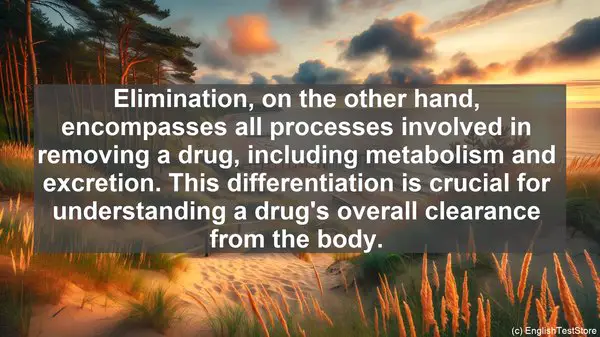Introduction
In the world of pharmaceutical science, precision is crucial. However, there are several words that are often used interchangeably, leading to confusion. Today, we’ll dive into the top 10 commonly confused words in this field, ensuring that you have a solid grasp on their meanings and usage.
1. Efficacy vs. Effectiveness
While both these terms relate to a drug’s ability to produce a desired effect, they differ in their context. Efficacy refers to how well a drug performs under ideal conditions, such as in a controlled clinical trial. Effectiveness, on the other hand, considers real-world scenarios, taking into account factors like patient compliance and other medications. Understanding this distinction is vital for evaluating a drug’s overall impact.
2. Pharmacokinetics vs. Pharmacodynamics
These terms often cause confusion due to their similar prefixes. Pharmacokinetics deals with how a drug moves through the body, encompassing absorption, distribution, metabolism, and excretion. Pharmacodynamics, on the other hand, focuses on the drug’s effects on the body, including its mechanism of action and therapeutic outcomes. While both are essential in drug development, they address different aspects of a drug’s journey.
3. Adverse Effect vs. Side Effect
When it comes to drug reactions, distinguishing between adverse effects and side effects is crucial. Adverse effects are unintended and potentially harmful reactions that occur at therapeutic doses. Side effects, on the other hand, are secondary, often expected effects that may or may not be desirable. Understanding this difference is vital for assessing a drug’s risk-benefit profile.

4. Generic vs. Brand Name
In the pharmaceutical market, you’ll often come across both generic and brand name drugs. The generic name refers to the drug’s active ingredient, while the brand name is the proprietary name given by the manufacturer. While both contain the same active ingredient, they may differ in terms of formulation and appearance. Understanding this distinction is essential for prescribing and dispensing medications.
5. Bioavailability vs. Bioequivalence
When it comes to generic drugs, bioavailability and bioequivalence are critical concepts. Bioavailability refers to the rate and extent at which the active ingredient is absorbed, while bioequivalence compares the generic drug’s performance to that of the brand name drug. Ensuring bioequivalence is crucial for the approval and use of generic medications.
6. Sympathomimetic vs. Parasympathomimetic
These terms relate to the effects on the autonomic nervous system. Sympathomimetic drugs mimic the actions of the sympathetic nervous system, often referred to as the ‘fight or flight’ response. Parasympathomimetic drugs, on the other hand, mimic the actions of the parasympathetic nervous system, often called the ‘rest and digest’ response. Understanding these distinctions is vital for selecting the appropriate drug for a specific condition.
7. Additive vs. Synergistic
When it comes to drug combinations, understanding the difference between additive and synergistic effects is crucial. Additive effects refer to the combined effect of two drugs being equal to the sum of their individual effects. Synergistic effects, on the other hand, occur when the combined effect is greater than the sum of the individual effects. This knowledge is essential for optimizing drug therapy.
8. Tolerance vs. Dependence
While both these terms relate to a person’s response to a drug, they differ in their nature. Tolerance refers to a reduced response to a drug over time, often requiring higher doses to achieve the same effect. Dependence, on the other hand, is a state where the body has adapted to the presence of the drug, and its sudden removal can lead to withdrawal symptoms. Understanding these concepts is vital for managing long-term drug therapy.

9. Excretion vs. Elimination
Although often used interchangeably, excretion and elimination have distinct meanings. Excretion refers to the removal of a drug or its metabolites from the body, often through urine or feces. Elimination, on the other hand, encompasses all processes involved in removing a drug, including metabolism and excretion. This differentiation is crucial for understanding a drug’s overall clearance from the body.
10. Titration vs. Tapering
In drug therapy, both titration and tapering are strategies used to adjust the dose. Titration involves gradually increasing or decreasing the dose to achieve the desired effect or minimize side effects. Tapering, on the other hand, refers to a gradual reduction in dose to safely discontinue a drug. Understanding these approaches is vital for ensuring optimal patient care.
